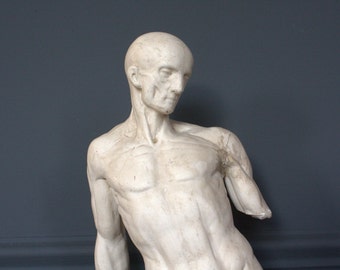

#Plaster of paris sculpture how to
Step by Step Guide: How to Seal Plaster Sculpture Step 1: Sanding Sealer This is why various sculptors choose to seal their work before it leaves the studio. Plaster that has not been sealed is much more likely to deteriorate from exposure to water or humidity. There are several ways to seal, but this article outlines the most important step you can take in protecting your work of art. The waterproofing will protect your piece for years to come against corrosion and mold. Sealing your plaster sculpture is vital to prevent future water damage. Why is Sealing Plaster of Paris Important? Over time, this can cause the plaster to discolor, crack, or even crumble. So, whether you’re a beginner or an experienced artist, read on for helpful tips on sealing plaster sculpture! Why Seal Plaster Sculpture? Plaster is a porous material that can absorb moisture and dirt from the air. We will also provide tips for choosing the right sealant for your project. In this blog post, we will explore the various methods of how to seal plaster sculpture and discuss the benefits and drawbacks of each. There are several methods for sealing plaster, and it is essential to choose the right one for your project. It is important to properly seal plaster sculpture so that the surface does not deteriorate. Image via alchetron.If you’re a sculptor, you’re probably familiar with the process of casting plaster sculptures.

The following collection will showcase some of the artists whose imagination found outlet in making of plaster sculptures.įeatured Image: Henry Moore - Reclining Woman, 1979. Today, plaster is applied in sculpture in both traditional and modern ways. It was considered as material in which copies of masterpieces and probes of sculptural ideas were made, until modern artists started to use it and mix it with other materials. However, until the 20th century plaster was considered a second rate material, similar in quality to clay. Romans were using plaster molds of Greek sculptures and paint to make reproductions in Renaissance artists made and collected casts, while renewed interest in this material came with the Neoclassicism when casts of ancient sculptures were in wide use. Egyptians pioneered casting method and were using plaster with their hands to make head and face cast of the deceased in the third millennium B.C. First plaster sculptures, figurative in character, go back to 7000 years B.C. It can be the only material the sculpture is made of or combined with others, such as wood, metal or glass. In the domain of sculpture, plaster has versatile applications. Casting also contributes to the general use of plaster, as sculpture made from melted materials is often poured in plaster mold. It is important to note that some of the most prominent and original works of art are painted on plaster layers, like medieval frescoes and Michelangelo’s Sistine Chapel, the renowned masterpiece of Renaissance art. Small details of their carving project can be examined from the clay cast. Artists can add clay and press it into the carving in order to check the final result. Considered both art and craft, carving of plaster like any other process starts with the mixing of plaster and water before the execution of a project begins. Using plaster for this requires high craft skills and dexterity of artists' hands as the process often includes carving of small details. In addition to sculpture, plaster finds its application in decorative purposes as well, mainly in architecture for decoration of interiors and exteriors. There are several types of plaster, usually divided according to content, such as gypsum, lime or cement plasters, with similar characteristics. Larger sculptures usually have some form of armature upon which plaster is applied such as wire mesh or cloth. Different from other materials, plaster can be easily molded but due to its brittleness it often requires support.

Plaster ranks among the most used materials, and plaster sculpture persisted in original artistic practices throughout the centuries. Different materials of sculpture are integral part of its later aesthetic charm.


 0 kommentar(er)
0 kommentar(er)
